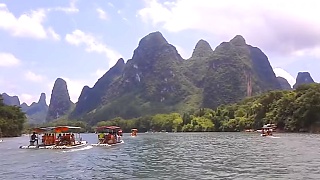
|
Music - the global language that brings people together. Love has no borders.
Zhou Shen sings 'Monsters' by Katie Sky - a song about the demons that can crush the human spirit.
Reaction by Katie, talking with YouTuber British Jack - and a challenge ...
British Jack and British Mum invited their friend and Professional UK Singer Katie Sky (of Monsters) to sing 周深 Zhou Shen's '大鱼/ Big Fish' all in Chinese! As we all know, 'Big Fish' is a very difficult song full of Chinese style, with a beautiful melody. As a powerful singer, Katie Sky showed off her voice today and sang a deep 'Big Fish', which amazed British Jack and British Mum ...
Katie Sky - Big Fish, the video ...
Katie and Jack look back on the musical journey, and also to the future ...
Don't miss the totally beautiful, moving and inspiring 2018 animated movie Big Fish and Begonia ...
Big Fish lyrics ...
The waves of the sea soundlessly drowns out the night,
Overflowing from the edges of the sky.
Big Fish is swimming in the gaps of dreamscape,
Gazing upon your slumbering form.
Look - the sea and sky are of the same color,
Listen - raising winds and falling rain.
Take your hand, blow away the endless mist.
Big Fish's wings are too vast,
I release the ropes of time.
I fear you'd fly far,
Far away from me.
But I fear even more so that you stay here forever.
Every drop of tear, they flow to you.
Falling into the depths of the sky.
The waves of the sea soundlessly drowns out the night,
Overflowing from the edges of the sky.
Big Fish is swimming in the gaps of dreamscape,
Gazing upon your slumbering form.
Look; the sea and sky are of the same color,
Listen; raising winds and falling rain.
Take your hand, blow away the endless mist.
Big Fish's wings are too vast,
I release the ropes of time.
Watch you fly far, so far,
Far away from me.
It was true, you were born for the Heavens.
Every drop of tear, they all flow to you.
Falling back to the first time we met.
Falling back to the first time we met.
Falling back to ... the first time ... we met.
|

 Lavender Manor, NingXia
Lavender Manor, NingXia
 Lavender Manor, NingXia
Lavender Manor, NingXia




